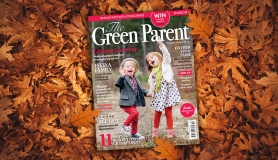In the often-woolly world of personal development, Gretchen Rubin is a practical and grounded sort. She doesn’t even – shock – like meditation. Rubin has spent the past decade researching and writing about happiness. A former lawyer, it was her fifth book, The Happiness Project written in 2009 – for which she spent a year testing different theories about how to live a more fulfilled life – that became a bestseller and made her a star of the self-help world (she also runs a popular blog and podcast).
Her latest book, The Four Tendencies, develops ideas first explored in 2015’s Better Than Before, in which she looked at how happiness and habits were linked. “[People] wanted to run,” she says, “but for some reason they couldn’t make themselves exercise. Or they wanted to write a novel in their free time, but somehow they weren’t doing it. It was trying to figure out why people did and didn’t break habits.”
She came up with her own personality framework – the idea being that each of us fits into one of four characteristics she calls the four tendencies. Rubin claims it explains the reasons behind why we do what we do, based on how different people respond to expectations – either outer ones (from, for example, a boss at work) to inner ones (things you want to do for yourself). According to Rubin’s categories, “upholders” easily do what is asked of them by themselves and others, while “obligers” need accountability. “Questioners” need to know why they’re doing something and “rebels” resist expectations. She says she truly felt that “I’d uncovered a law of nature: human nature”.
The biggest thing she has learned in more than a decade of thinking and writing about happiness, she says, is that “there is no one-size-fits-all solution. We can only be happy, healthy, creative and productive if we take into account our own nature, our own values and interests. The question is: what kind of person am I, what works for me, what do I care about?” Even so, Rubin is game for creating rules and lists (she’s an upholder). What, then, are some of the things she has learned on her quest for a happier life?
In The Happiness Project, Rubin created “12 commandments” by which to live her life, including “act the way I want to feel” and “enjoy the process” – but she stresses that someone else’s list will probably be different. “My first personal commandment is to ‘Be Gretchen’, because in the end there is no one best practice, there is no best way,” she says. “When I started, I thought I would find the secret [to happiness]. There are universal things – relationships make people happier. But in terms of should you get up early, or stay up late? Are you more creative if you’re in a messy environment or a simple environment? It’s so much about who you are.”
Test Yourself
A 2009 study by San Francisco State University found that learning to do something new could be stressful and frustrating to begin with, but paid off in terms of greater overall happiness. “I thought ‘oh no, I like familiarity and mastery’,” says Rubin. “I just felt like it wouldn’t be true for me, but I have become a huge believer in the power of novelty and challenge and how this is a big engine of happiness.”







